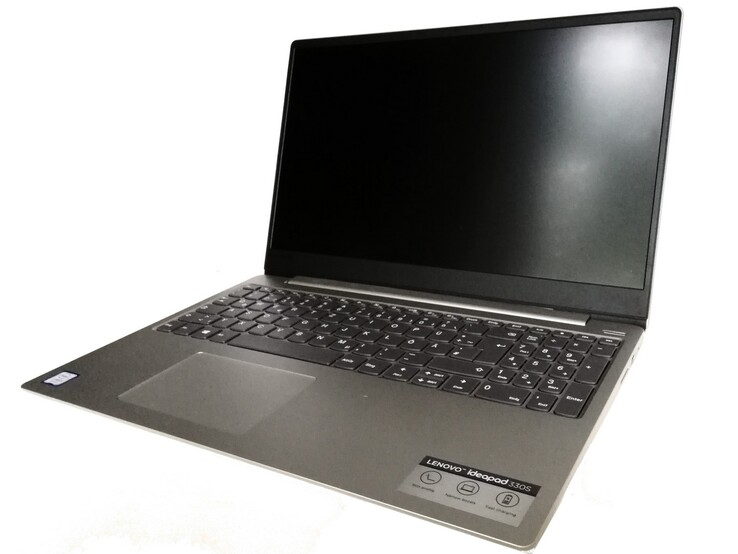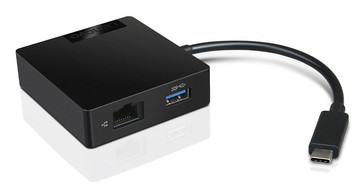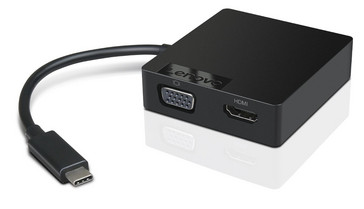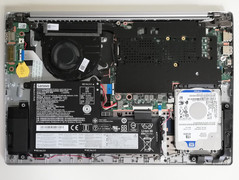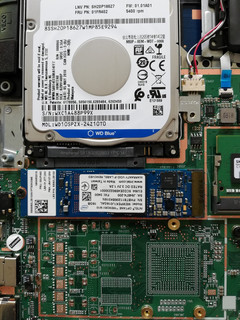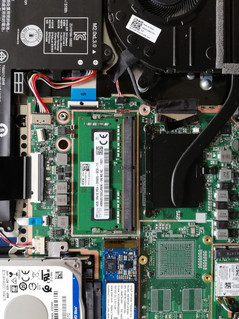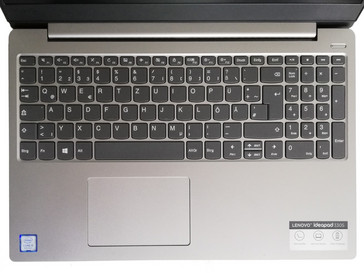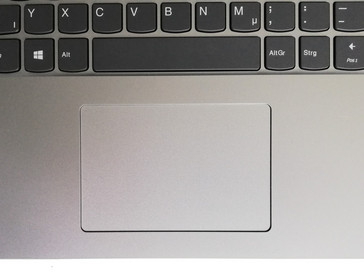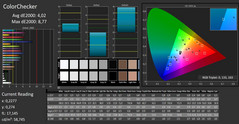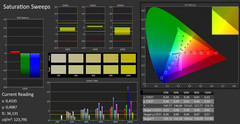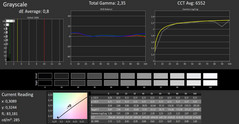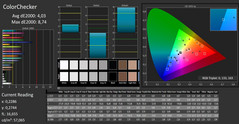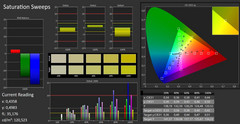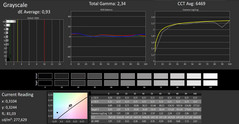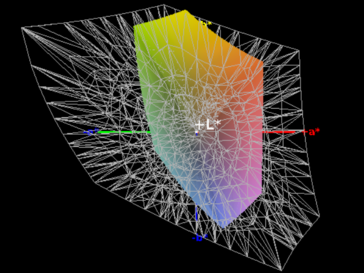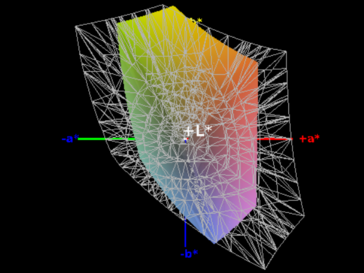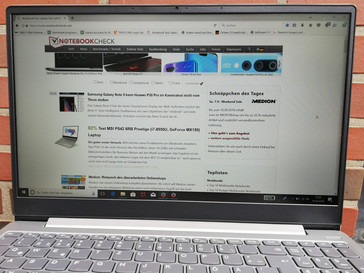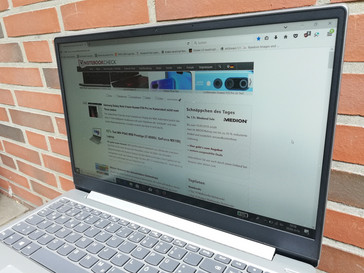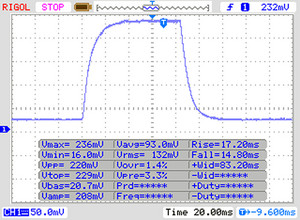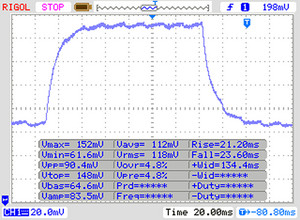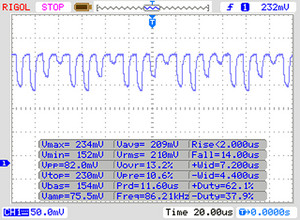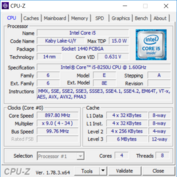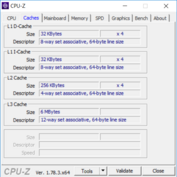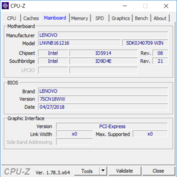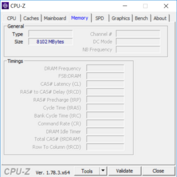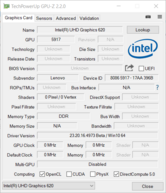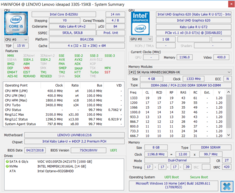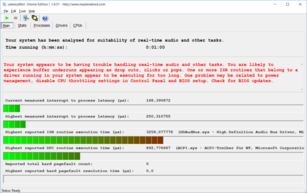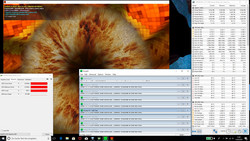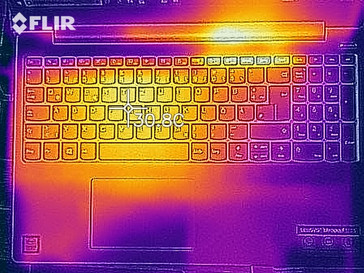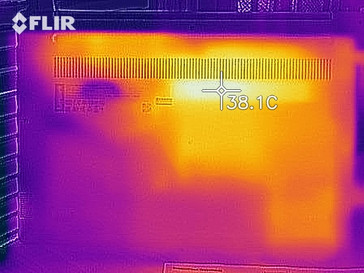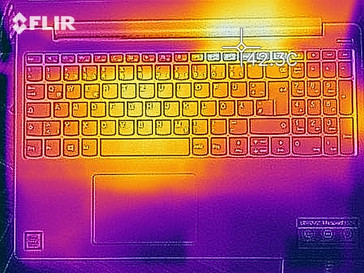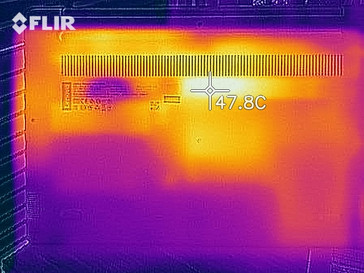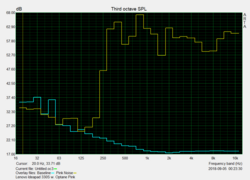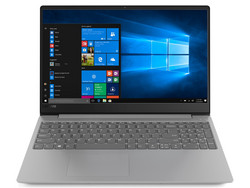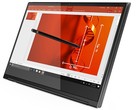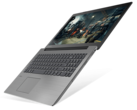Lenovo IdeaPad 330S-15IKB (i5-8250U, UHD620) Laptop Review
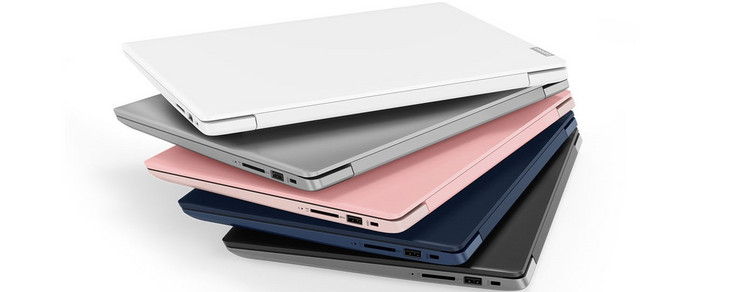
With the IdeaPad 330S, Lenovo offers a lot of hardware options at low prices. The prices range from 350 Euros ($407) up to 1000 Euros ($1163), depending on the model. Available processors range from the simple Intel Pentium 4415U up to the powerful Core i7-8550U. Besides different RAM and storage configurations, buyers can also choose between various graphics solutions.
Our review device comes with Intel’s Core i5-8250 CPU, integrated UHD Graphics 620 GPU, 8 GB of RAM and a 1 TB hard drive. The HDD is accelerated with the help of a 16 GB Optane module, therefore it should offer faster read and write speeds. Our review configuration costs 600 Euros ($698).
Because the competition also offers powerful laptops in this price range, we compare the Lenovo notebook against several similarly priced devices. The competing devices include: The Acer Aspire 5 A515-51G-509A, the VivoBook 15 from Asus and MSI’s PL62. A comparison with the similarly priced Lenovo ThinkPad E580 may also prove interesting for prospective buyers.
Case – Robust laptop with a polished aluminum case
The case of the IdeaPad 330S is made of polished aluminum. This is why it looks very premium. Moreover, it is very rigid and can be carried with one hand without any creaking noises. The top of the display lid also consists of aluminum. The display lid is quite easy to bend or twist because of the thin bezels. However, the lid does not twist or bend when you are simply opening or closing it.
The bottom cover of the IdeaPad 330S can be removed after all of the screws on the underside are undone. Once the bottom cover is removed, users can clean the internals or do some light maintenance work.
The dimensions of the 330S are somewhat smaller than those of other 15-inch notebooks. To achieve a smaller design, Lenovo shrank the bezels and removed a number of ports. With a weight of approximately 1.8 kilograms, the 330S takes a spot in the middle of our comparison group. The 330S is rather good for mobile use.
When the laptop sits on a table, opening the display lid with one hand is not possible, because the chassis does not provide enough counterweight for the stiff hinges of the screen.
Connectivity – IdeaPad 330S with wireless AC
With the IdeaPad 330S, Lenovo has reduced the selections of ports to the bare minimum (USB, HDMI and audio jack). That being said, the notebook has one USB Type-C port and the SD card reader supports the following formats: SD, SDHC, SDXC and MMC.
SD Card Reader
The SD card reader of the IdeaPad 330S features support for the following formats: SD, SDHC, SDXC and MMC. With our reference-grade SD card (Toshiba Exceria Pro SDXC 64 GB UHS-II), the Lenovo laptop achieves subpar read and write rates. This is why it takes the next-to-last spot in our comparison chart.
| SD Card Reader | |
| average JPG Copy Test (av. of 3 runs) | |
| Lenovo ThinkPad E580-20KSCTO1WW (Toshiba Exceria Pro M501) | |
| Acer Aspire 5 A515-51G-509A (Toshiba Exceria Pro M510 microSD) | |
| Average of class Office (22.4 - 198.5, n=28, last 2 years) | |
| Asus VivoBook 15 F510UF-ES71 (Toshiba Exceria Pro SDXC 64 GB UHS-II) | |
| Lenovo IdeaPad 330S-15IKB-81F500N5GE (Toshiba Exceria Pro SDXC 64 GB UHS-II) | |
| MSI PL62 MX150 7300HQ (Toshiba Exceria Pro SDXC 64 GB UHS-II) | |
| maximum AS SSD Seq Read Test (1GB) | |
| Lenovo ThinkPad E580-20KSCTO1WW (Toshiba Exceria Pro M501) | |
| Acer Aspire 5 A515-51G-509A (Toshiba Exceria Pro M510 microSD) | |
| Average of class Office (25 - 249, n=26, last 2 years) | |
| Asus VivoBook 15 F510UF-ES71 (Toshiba Exceria Pro SDXC 64 GB UHS-II) | |
| MSI PL62 MX150 7300HQ (Toshiba Exceria Pro SDXC 64 GB UHS-II) | |
Communication
Users of the IdeaPad 330S will have to do without an Ethernet port. However, the Lenovo laptop comes with an integrated Wi-Fi module that supports the fast wireless AC standard and operates in the 5 GHz spectral band. Because the 330S comes with a very simple antenna, it cannot achieve the same transfer rates as the VivoBook 15, but at 300 MB/s, it is still pretty fast when it comes to Wi-Fi.
Accessories
The box of the Lenovo IdeaPad 330S only contains a 45-watt power adapter. Various bags and portable storage devices can be purchased through Lenovo’s website.
Lenovo offers proprietary docking stations and a Travel Hub for the USB Type-C port. The Travel Hub costs 100 Euros ($116) and expands the selection of ports with a USB Type-A port as well as an Ethernet port, a VGA output and an HDMI port.
Maintenance
The bottom cover of the IdeaPad 330S can be removed once all the screws on the underside of the device are undone. After you remove the bottom cover you will have access to the innards of the device. This means that you will be able to clean the fan, replace the HDD or change the battery. A black plate covers the entire motherboard, to which it is secured by means of four screws. Once you remove this plate you will be able to access the Optane unit and the RAM. Our review device has 8 GB of RAM, 4 of which is replaceable.
Warranty
The IdeaPad 330S comes with a 24-month warranty. Please see our Guarantees, Return policies and Warranties FAQ for country-specific information.
Input Devices – Lenovo laptop with a crisp keyboard
Keyboard
The IdeaPad 330S has a keyboard with relatively large keys, each of which has a clear actuation point. The keyboard is suited for fast typing. Only the function keys are problematic, because they are quite small. Besides the narrow numeric pad, there is also a very small enter key. The up and down arrow keys are also hard to use, because of their small size.
Touchpad
The 330S uses a ClickPad as a replacement for the mouse. It sits firmly in its place and allows for precise movements of the cursor. Fingertips can glide smoothly over the pad, which is why drag-and-drop movements do not present any challenges. The ClickPad has no trouble recognizing inputs in the lower left or the lower right corner. While the keyboard is very quiet, the mouse clicks with the ClickPad are quite audible in quiet environments.
Display – IdeaPad 330S with a Full HD panel
Buyers of the IdeaPad 330S have a choice between a Full HD IPS panel with a resolution of 1920x1080 and an HD TN panel with a resolution of 1366x768. Our review device comes with the Full HD panel. It has an average screen brightness of 252 cd/m², which is why it is comparable to other competing devices. However, the brightness distribution of only 75% is somewhat below average.
| |||||||||||||||||||||||||
Brightness Distribution: 75 %
Center on Battery: 283 cd/m²
Contrast: 449:1 (Black: 0.63 cd/m²)
ΔE ColorChecker Calman: 4.02 | ∀{0.5-29.43 Ø4.78}
calibrated: 4.03
ΔE Greyscale Calman: 0.8 | ∀{0.09-98 Ø5}
58% sRGB (Argyll 1.6.3 3D)
38% AdobeRGB 1998 (Argyll 1.6.3 3D)
41.17% AdobeRGB 1998 (Argyll 3D)
58.8% sRGB (Argyll 3D)
39.85% Display P3 (Argyll 3D)
Gamma: 2.35
CCT: 6552 K
| Lenovo IdeaPad 330S-15IKB-81F500N5GE BOE0700, , 1920x1080, 15.6" | Lenovo ThinkPad E580-20KSCTO1WW BOE NV156FHM-N49, , 1920x1080, 15.6" | Asus VivoBook 15 F510UF-ES71 LG Philips LP156WF9-SPK2, , 1920x1080, 15.6" | MSI PL62 MX150 7300HQ Chi Mei CMN15D6, , 1920x1080, 15.6" | Acer Aspire 5 A515-51G-509A Chi Mei (CMN15D5), , 1920x1080, 15.6" | |
|---|---|---|---|---|---|
| Display | -0% | -0% | 95% | ||
| Display P3 Coverage (%) | 39.85 | 39.83 0% | 39.35 -1% | 85.4 114% | |
| sRGB Coverage (%) | 58.8 | 58.5 -1% | 59.2 1% | 99.6 69% | |
| AdobeRGB 1998 Coverage (%) | 41.17 | 41.15 0% | 40.65 -1% | 82.9 101% | |
| Response Times | -16% | 29% | 28% | 29% | |
| Response Time Grey 50% / Grey 80% * (ms) | 44 ? | 48.4 ? -10% | 27.2 ? 38% | 44 ? -0% | 43.3 ? 2% |
| Response Time Black / White * (ms) | 31 ? | 37.6 ? -21% | 24.8 ? 20% | 14 ? 55% | 13.8 ? 55% |
| PWM Frequency (Hz) | 86000 ? | 22030 ? | 250 ? | 25970 ? | |
| Screen | -20% | -40% | -159% | -200% | |
| Brightness middle (cd/m²) | 283 | 292 3% | 257 -9% | 227 -20% | 246 -13% |
| Brightness (cd/m²) | 252 | 272 8% | 246 -2% | 200 -21% | 225 -11% |
| Brightness Distribution (%) | 75 | 84 12% | 89 19% | 82 9% | 81 8% |
| Black Level * (cd/m²) | 0.63 | 0.3 52% | 0.34 46% | 0.46 27% | 0.51 19% |
| Contrast (:1) | 449 | 973 117% | 756 68% | 493 10% | 482 7% |
| Colorchecker dE 2000 * | 4.02 | 5.8 -44% | 4.54 -13% | 10.88 -171% | 11 -174% |
| Colorchecker dE 2000 max. * | 8.77 | 22.4 -155% | 16 -82% | 18.36 -109% | 32.4 -269% |
| Colorchecker dE 2000 calibrated * | 4.03 | 3.61 10% | 4.6 -14% | ||
| Greyscale dE 2000 * | 0.8 | 2.3 -188% | 4.6 -475% | 12.18 -1423% | 11.6 -1350% |
| Gamma | 2.35 94% | 2.12 104% | 2.44 90% | 2.58 85% | 1.91 115% |
| CCT | 6552 99% | 6223 104% | 7096 92% | 14446 45% | 11807 55% |
| Color Space (Percent of AdobeRGB 1998) (%) | 38 | 37.6 -1% | 37.5 -1% | 74 95% | |
| Color Space (Percent of sRGB) (%) | 58 | 58 0% | 59.2 2% | 63 9% | |
| Total Average (Program / Settings) | -12% /
-15% | -4% /
-24% | -12% /
-84% | -86% /
-158% |
* ... smaller is better
According to our CalMAN measurements, the screen of the IdeaPad 330S has a subpar contrast ratio of 449:1 and an elevated black value of 0.63 cd/m². This is why the colors are hard to tell apart and the blacks look grayish. In everyday use, the screen content looks rather “warm”, which can be attributed to a low color volume, especially in the blue part of the spectrum. The 330S covers only 38% of the AdobeRGB color space and 58% of the sRGB color space. These values are typical for notebooks in this price range.
Display Response Times
| ↔ Response Time Black to White | ||
|---|---|---|
| 31 ms ... rise ↗ and fall ↘ combined | ↗ 17 ms rise | |
| ↘ 14 ms fall | ||
| The screen shows slow response rates in our tests and will be unsatisfactory for gamers. In comparison, all tested devices range from 0.1 (minimum) to 240 (maximum) ms. » 83 % of all devices are better. This means that the measured response time is worse than the average of all tested devices (20.2 ms). | ||
| ↔ Response Time 50% Grey to 80% Grey | ||
| 44 ms ... rise ↗ and fall ↘ combined | ↗ 21 ms rise | |
| ↘ 23 ms fall | ||
| The screen shows slow response rates in our tests and will be unsatisfactory for gamers. In comparison, all tested devices range from 0.165 (minimum) to 636 (maximum) ms. » 72 % of all devices are better. This means that the measured response time is worse than the average of all tested devices (31.6 ms). | ||
Screen Flickering / PWM (Pulse-Width Modulation)
| Screen flickering / PWM detected | 86000 Hz | ≤ 90 % brightness setting | |
The display backlight flickers at 86000 Hz (worst case, e.g., utilizing PWM) Flickering detected at a brightness setting of 90 % and below. There should be no flickering or PWM above this brightness setting. The frequency of 86000 Hz is quite high, so most users sensitive to PWM should not notice any flickering. In comparison: 53 % of all tested devices do not use PWM to dim the display. If PWM was detected, an average of 8111 (minimum: 5 - maximum: 343500) Hz was measured. | |||
Performance – Office notebook with some throttling
Buyers of the IdeaPad 330S have a wide choice of hardware configurations. These range from a simple office notebook with an Intel Pentium 4415U to a gaming machine with a Core i7-8550U and an Nvidia GeForce GTX 1050.
Our review device features 8 GB of RAM, an Intel Core i5-8250U processor and Intel’s UHD Graphics 620. Therefore, it can run even demanding office applications and older games without any problems.
Processor
The Core i5-8250U in the IdeaPad 330S is a quad-core CPU with a base clock of 1.6 GHz and a boost clock of 3.4 GHz. It is significantly faster than its predecessor, the Core i5-7200U. Thanks to the improved manufacturing process, the Core i5-8250U is about 40% faster than its predecessor. The performance of the CPU depends strongly on the cooling solution. This processor usually performs worse when it is under load over an extended period of time.
In our Cinebench loop, the CPU performance drops by 6% shortly after the start.
The IdeaPad 330S achieves subpar results in the Cinebench benchmark. The score lies well below what other devices with the Core i5-8250U can achieve, which is why the Lenovo laptop takes last place in our comparison chart.
You can see how the Intel Core i5-8250U stacks up against other processors on our CPU benchmarks page.
System Performance
In the PCMark 8 benchmark, the Lenovo IdeaPad 330S achieves average results, which are comparable to what you might expect from other notebooks in this price range. The Lenovo laptop is beaten by almost all of its competitors in the Home section of the benchmark. In day-to-day use, the IdeaPad 330S is very responsive. It does not suffer from any lags or long loading times.
You can learn how well other notebooks perform in our benchmarks on our Benchmarks page.
| PCMark 8 Home Score Accelerated v2 | 3621 points | |
| PCMark 8 Work Score Accelerated v2 | 4783 points | |
| PCMark 10 Score | 3609 points | |
Help | ||
Storage Devices
The IdeaPad 330S comes with a 1 TB HDD, which is accelerated with the help of an Optane module. The Optane drive has 16 GB of flash storage and makes loading times shorter by improving read performance. In our storage benchmarks, the Optane-accelerated HDD achieves read and write rates similar to low-priced SSDs. The Optane module is built into several models without any additional cost.
You can learn how the Optane-HDD combo compares against other storage devices on our HDD/SSD Benchmarks page.
| Lenovo IdeaPad 330S-15IKB-81F500N5GE | Lenovo ThinkPad E580-20KSCTO1WW Toshiba KBG30ZMT128G | MSI PL62 MX150 7300HQ | Acer Aspire 5 A515-51G-509A SK Hynix HFS256G39TND-N210A | Global Average -3 | ||
|---|---|---|---|---|---|---|
| CrystalDiskMark 3.0 | -15% | -79% | 11% | 28% | ||
| Read Seq (MB/s) | 886 | 916 3% | 118.7 -87% | 499.5 -44% | 656 ? -26% | |
| Write Seq (MB/s) | 158.2 | 135 -15% | 109.6 -31% | 265.8 68% | 522 ? 230% | |
| Read 512 (MB/s) | 857 | 787 -8% | 43.73 -95% | 314.3 -63% | 416 ? -51% | |
| Write 512 (MB/s) | 156.6 | 134.3 -14% | 107.4 -31% | 266.3 70% | 419 ? 168% | |
| Read 4k (MB/s) | 109.3 | 33.34 -69% | 0.437 -100% | 29.24 -73% | 27.6 ? -75% | |
| Write 4k (MB/s) | 66.6 | 92.4 39% | 8.23 -88% | 78.4 18% | 62.1 ? -7% | |
| Read 4k QD32 (MB/s) | 269.3 | 199.2 -26% | 0.575 -100% | 402.5 49% | 216 ? -20% | |
| Write 4k QD32 (MB/s) | 162.4 | 118.8 -27% | 6.135 -96% | 264.9 63% | 169.4 ? 4% |
Graphics Card
In the IdeaPad 330S, the integrated Intel UHD Graphics 620 is responsible for image rendering. With a core clock of 1150 MHz, this graphics unit is only suitable for applications that do not require a lot of GPU power. It can only handle simple and older games. The graphics chip benefits significantly from dual-channel RAM. Because the RAM in our review device runs in dual-channel mode, it gets a boost in GPU performance.
In the 3DMark 11 benchmark, the Lenovo laptop provides slightly above-average results, when compared to other notebooks with the Intel UHD Graphics 620. However, it still cannot keep up with the competitors that have dedicated graphics cards.
To find out what kind of performance you can expect from Intel’s UHD Graphics 620, visit our GPU Benchmarks page.
| 3DMark 11 Performance | 1990 points | |
| 3DMark Cloud Gate Standard Score | 8327 points | |
| 3DMark Fire Strike Score | 538 points | |
Help | ||
Gaming Performance
The Intel UHD Graphics 620 in the IdeaPad 330S can run casual and older games smoothly, but only on low settings and at low resolutions, because the performance of the GPU is not even sufficient to run five-year-old titles on decent settings. Here, notebooks with dedicated GPUs provide a lot more performance.
To learn which games you can run with the Intel UHD Graphics 620, visit our Gaming Benchmarks page.
| Thief | |
| 1920x1080 Very High Preset AA:FXAA & High SS AF:8x | |
| Lenovo IdeaPad 330S-15IKB-81F500N5GE | |
| Average Intel UHD Graphics 620 (6 - 7.1, n=2) | |
| 1366x768 High Preset AA:FXAA & Low SS AF:4x | |
| Lenovo IdeaPad 330S-15IKB-81F500N5GE | |
| Average Intel UHD Graphics 620 (8.5 - 15.1, n=5) | |
| 1366x768 Normal Preset AA:FX | |
| Lenovo IdeaPad 330S-15IKB-81F500N5GE | |
| Average Intel UHD Graphics 620 (10.4 - 19.7, n=10) | |
| 1024x768 Very Low Preset | |
| Average Intel UHD Graphics 620 (16.3 - 34.3, n=10) | |
| Lenovo IdeaPad 330S-15IKB-81F500N5GE | |
| Rise of the Tomb Raider | |
| 1920x1080 Very High Preset AA:FX AF:16x | |
| Asus VivoBook 15 F510UF-ES71 | |
| Average Intel UHD Graphics 620 (3 - 14.5, n=11) | |
| 1920x1080 High Preset AA:FX AF:4x | |
| Asus VivoBook 15 F510UF-ES71 | |
| Lenovo IdeaPad 330S-15IKB-81F500N5GE | |
| Average Intel UHD Graphics 620 (4.9 - 32, n=42) | |
| Lenovo ThinkPad E580-20KSCTO1WW | |
| 1366x768 Medium Preset AF:2x | |
| Asus VivoBook 15 F510UF-ES71 | |
| Lenovo IdeaPad 330S-15IKB-81F500N5GE | |
| Average Intel UHD Graphics 620 (6.5 - 49.3, n=62) | |
| Lenovo ThinkPad E580-20KSCTO1WW | |
| 1024x768 Lowest Preset | |
| Asus VivoBook 15 F510UF-ES71 | |
| Lenovo IdeaPad 330S-15IKB-81F500N5GE | |
| Average Intel UHD Graphics 620 (10.4 - 110.7, n=82) | |
| Lenovo ThinkPad E580-20KSCTO1WW | |
| low | med. | high | ultra | |
|---|---|---|---|---|
| Tomb Raider (2013) | 24.3 | 14.7 | 7.6 | |
| BioShock Infinite (2013) | 66.4 | 34.2 | 29.9 | 10 |
| Thief (2014) | 22.9 | 15.2 | 15.1 | 7.1 |
| Rise of the Tomb Raider (2016) | 24.3 | 14.7 | 7.6 |
Emissions – Lenovo notebook for quiet environments
System Noise
In day-to-day use, the IdeaPad 330S is practically silent. The simple office programs and Internet browsing do not present too much of a challenge for the CPU, which is why the fan is silent most of the time. In demanding applications, the fan is very quiet and is often drowned out by the ambient noise.
Therefore, the IdeaPad 330S from Lenovo is suitable for quiet environments.
Noise level
| Idle |
| 30.9 / 30.9 / 31.3 dB(A) |
| HDD |
| 31.9 dB(A) |
| DVD |
| 0 / dB(A) |
| Load |
| 34.1 / 36.5 dB(A) |
 | ||
30 dB silent 40 dB(A) audible 50 dB(A) loud |
||
min: | ||
Temperature
The IdeaPad 330S does not become hot when idle. The temperatures at the top of the chassis right below the screen barely break the 30 °C (86 °F) mark. Under load, the temperatures do not exceed the 40 °C (104 °F) mark. During our one-hour stress test, the core temperatures peak at 69 °C (156.2 °F), which leads to a reduction in the clock rate. Because our stress test represents an extreme case scenario, any issues associated with thermal throttling should not arise during normal use.
(+) The maximum temperature on the upper side is 39.2 °C / 103 F, compared to the average of 34.3 °C / 94 F, ranging from 21.2 to 62.5 °C for the class Office.
(+) The bottom heats up to a maximum of 39.7 °C / 103 F, compared to the average of 36.8 °C / 98 F
(+) In idle usage, the average temperature for the upper side is 27.5 °C / 82 F, compared to the device average of 29.5 °C / 85 F.
(+) The palmrests and touchpad are cooler than skin temperature with a maximum of 29.4 °C / 84.9 F and are therefore cool to the touch.
(±) The average temperature of the palmrest area of similar devices was 27.6 °C / 81.7 F (-1.8 °C / -3.2 F).
Speakers
Lenovo IdeaPad 330S-15IKB-81F500N5GE audio analysis
(-) | not very loud speakers (67.2 dB)
Bass 100 - 315 Hz
(-) | nearly no bass - on average 23.1% lower than median
(-) | bass is not linear (17% delta to prev. frequency)
Mids 400 - 2000 Hz
(+) | balanced mids - only 4% away from median
(±) | linearity of mids is average (14% delta to prev. frequency)
Highs 2 - 16 kHz
(+) | balanced highs - only 1.7% away from median
(+) | highs are linear (4.9% delta to prev. frequency)
Overall 100 - 16.000 Hz
(±) | linearity of overall sound is average (22.6% difference to median)
Compared to same class
» 60% of all tested devices in this class were better, 8% similar, 32% worse
» The best had a delta of 7%, average was 21%, worst was 53%
Compared to all devices tested
» 66% of all tested devices were better, 6% similar, 29% worse
» The best had a delta of 4%, average was 24%, worst was 134%
Apple MacBook 12 (Early 2016) 1.1 GHz audio analysis
(+) | speakers can play relatively loud (83.6 dB)
Bass 100 - 315 Hz
(±) | reduced bass - on average 11.3% lower than median
(±) | linearity of bass is average (14.2% delta to prev. frequency)
Mids 400 - 2000 Hz
(+) | balanced mids - only 2.4% away from median
(+) | mids are linear (5.5% delta to prev. frequency)
Highs 2 - 16 kHz
(+) | balanced highs - only 2% away from median
(+) | highs are linear (4.5% delta to prev. frequency)
Overall 100 - 16.000 Hz
(+) | overall sound is linear (10.2% difference to median)
Compared to same class
» 7% of all tested devices in this class were better, 2% similar, 91% worse
» The best had a delta of 5%, average was 18%, worst was 53%
Compared to all devices tested
» 4% of all tested devices were better, 1% similar, 94% worse
» The best had a delta of 4%, average was 24%, worst was 134%
Energy Management – Six hours of battery life with the IdeaPad 330S
Energy Consumption
The Lenovo IdeaPad 330S is an energy-efficient notebook. Our measurements reveal a slightly elevated power draw when idle. However, under load, the laptop draws significantly less power than the competition. Because the power consumption peaks at 34 watts, the 45-watt AC adapter should have no trouble supplying the notebook with enough energy.
| Off / Standby | |
| Idle | |
| Load |
|
Key:
min: | |
| Lenovo IdeaPad 330S-15IKB-81F500N5GE i5-8250U, UHD Graphics 620, , IPS, 1920x1080, 15.6" | Lenovo ThinkPad E580-20KSCTO1WW i5-8250U, UHD Graphics 620, Toshiba KBG30ZMT128G, IPS LED, 1920x1080, 15.6" | Asus VivoBook 15 F510UF-ES71 i5-8550U, GeForce MX130, Seagate Mobile HDD 1TB ST1000LM035, IPS, 1920x1080, 15.6" | MSI PL62 MX150 7300HQ i5-7300HQ, GeForce MX150, , TN LED, 1920x1080, 15.6" | Acer Aspire 5 A515-51G-509A i5-8250U, GeForce MX130, SK Hynix HFS256G39TND-N210A, TN, 1920x1080, 15.6" | Average Intel UHD Graphics 620 | Average of class Office | |
|---|---|---|---|---|---|---|---|
| Power Consumption | 1% | -37% | -109% | -38% | -9% | -30% | |
| Idle Minimum * (Watt) | 5 | 3.4 32% | 5.9 -18% | 9.2 -84% | 5.1 -2% | 3.81 ? 24% | 4.54 ? 9% |
| Idle Average * (Watt) | 7.6 | 6.7 12% | 7 8% | 13.6 -79% | 7.6 -0% | 6.94 ? 9% | 7.52 ? 1% |
| Idle Maximum * (Watt) | 8.6 | 7.7 10% | 8.5 1% | 14.7 -71% | 8.2 5% | 8.75 ? -2% | 8.91 ? -4% |
| Load Average * (Watt) | 25.6 | 31.1 -21% | 54.5 -113% | 64 -150% | 49.4 -93% | 35 ? -37% | 42.8 ? -67% |
| Load Maximum * (Watt) | 34 | 42.9 -26% | 55.7 -64% | 89.2 -162% | 68 -100% | 47.5 ? -40% | 64.3 ? -89% |
| Witcher 3 ultra * (Watt) | 50.6 | 42.1 |
* ... smaller is better
Battery Life
In our practically oriented Wi-Fi test, the IdeaPad 330S lasts for about six hours. Therefore, the Lenovo laptop takes a spot in the middle of our comparison chart when it comes to battery runtimes. However, an average office notebook usually lasts an hour longer in this battery test.
According to Lenovo, the IdeaPad 330S supports Quick Charging and can get two hours of battery life after being plugged in for 15 minutes. However, to use this function, you will have to get an optional 65-watt power adapter from Lenovo.
| Lenovo IdeaPad 330S-15IKB-81F500N5GE i5-8250U, UHD Graphics 620, 52 Wh | Lenovo ThinkPad E580-20KSCTO1WW i5-8250U, UHD Graphics 620, 45 Wh | Asus VivoBook 15 F510UF-ES71 i5-8550U, GeForce MX130, 42 Wh | MSI PL62 MX150 7300HQ i5-7300HQ, GeForce MX150, 41.4 Wh | Acer Aspire 5 A515-51G-509A i5-8250U, GeForce MX130, 48 Wh | Average of class Office | |
|---|---|---|---|---|---|---|
| Battery runtime | 6% | -33% | -24% | 19% | 64% | |
| Reader / Idle (h) | 12.6 | 14.4 14% | 14.5 15% | 22.3 ? 77% | ||
| WiFi v1.3 (h) | 5.8 | 7 21% | 3.9 -33% | 4.4 -24% | 5.8 0% | 12.6 ? 117% |
| Load (h) | 1.9 | 1.6 -16% | 2.7 42% | 1.849 ? -3% | ||
| H.264 (h) | 7.3 | 8.8 | 14.9 ? |
Verdict – Good performance for a low price
Pros
Cons
In our review, the IdeaPad 330S proves to be a solid all-rounder that can perform most of the common computing tasks. The Intel CPU provides enough power for the smooth operation of Windows 10 and many other applications. Moreover, users can replace the Optane unit with an SSD. However, this will require some sleight of hand. That being said, the Optane-accelerated HDD in the IdeaPad 330S performs much better than traditional hard drives. The 330S cannot run any demanding games.
The IdeaPad 330S impresses with a good amount of performance and earns a recommendation, thanks in large part to its low price.
The 600-Euro ($698) IdeaPad 330S gets a clear recommendation from us. Our review device evinces no flaws in terms of the build quality and both the keyboard and the ClickPad sit firmly in their positions. The poor selection of ports can be easily overcome with the help of the USB Type-C port. We have two major points of criticism: 1) the slow SD card reader and 2) the low display brightness. Moreover, the CPU performs a little worse than expected.
Lenovo IdeaPad 330S-15IKB-81F500N5GE
- 09/14/2018 v6 (old)
Mike Wobker




